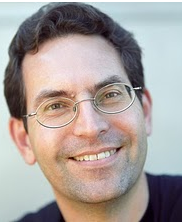
By MIKE MAGEE
One of the top ten headlines of all time created by the satirical geniuses at The Onion was published 25 years ago this December. It read, “God Answers Prayers Of Paralyzed Little Boy. ‘No,’ Says God.”
The first paragraph of that column introduced us to Timmy Yu, an optimistic 7-year old, who despite the failures of the health system had held on to his “precious dream.” As the article explained, “From the bottom of his heart, he has hoped against hope that God would someday hear his prayer to walk again. Though many thought Timmy’s heavenly plea would never be answered, his dream finally came true Monday, when the Lord personally responded to the wheelchair-bound boy’s prayer with a resounding no.”
But with a faith that rivals the chieftains of today’s American health care system who continue to insist this is “the best health care in the world,” this Timmy remained undeterred. As The Onion recorded the imagined conversation, “‘I knew that if I just prayed hard enough, God would hear me,’ said the joyful Timmy,., as he sat in the wheelchair to which he will be confined for the rest of his life. ‘And now my prayer has been answered. I haven’t been this happy since before the accident, when I could walk and play with the other children like a normal boy.’”
According to the article, the child did mildly protest the decision, but God held the line, suggesting other alternatives. “God strongly suggested that Timmy consider praying to one of the other intercessionary agents of Divine power, like Jesus, Mary or maybe even a top saint,” Timmy’s personal physician, Dr. William Luttrell, said. ‘The Lord stressed to Timmy that it was a long shot, but He said he might have better luck with one of them.’”
It didn’t take a wild leap of faith to be thrust back into the present this week. Transported by a headline to Rochester, Minnesota, the banner read, “Mayo Clinic to spend $5 billion on tech-heavy redesign of its Minnesota campus.” The “reinvention” is intended to “to present a 21st-century vision of clinical care” robust enough to fill 2.4 million square feet of space.
The Mayo Clinic’s faith in this vision is apparently as strong as little “Timmy’s”, and their “God” goes by the initials AI.
Continue reading…



 A Time of Uncertainty …
A Time of Uncertainty …










